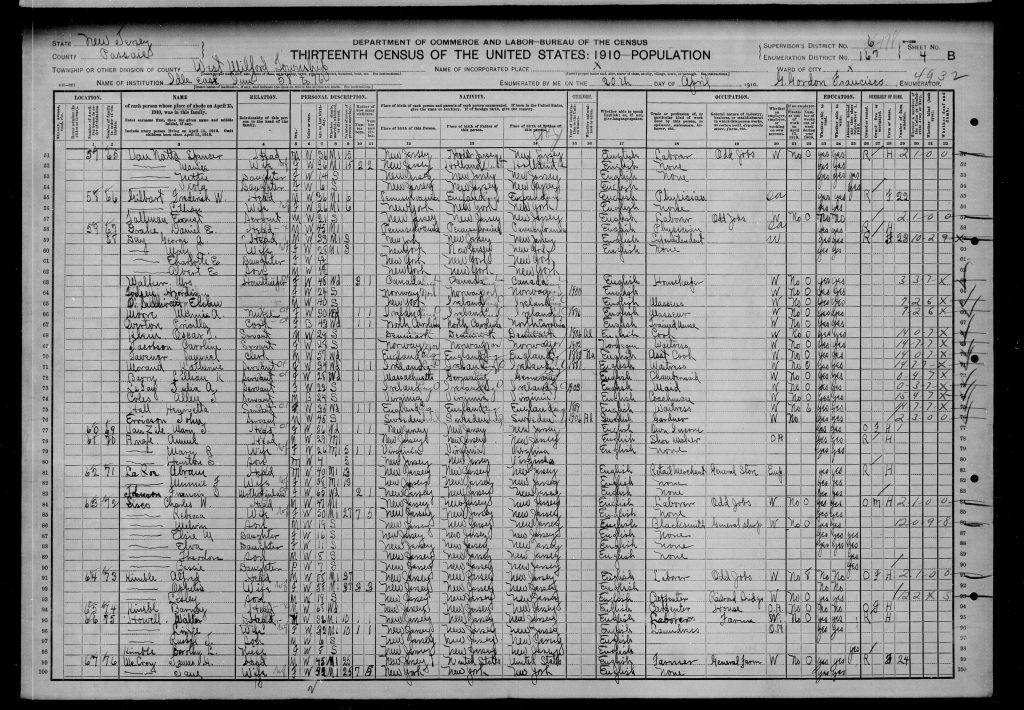
The thirteenth Census of The United States in 1910 lists 14 employees at Idylease. Predominantly from Ireland, the staff also boasted workers from Canada, Denmark, Sweden, England & Norway.
After the Famine struck Ireland in 1847, millions of Irish immigrants landed on America’s shores. Many of them were women, young and unmarried. In fact, it was far easier for a single woman to get a job in America than a man–because there was a huge demand for domestic servants. Irish female immigrants, in particular, were almost exclusively domestics. They became chamber maids, cooks, and the caretakers of children. Turn of the century Americans disdained this type of work and felt these domestic tasks where fit only for servants.
In a letter written by Dr. Edgar Day who was the operator of Idylease in 1903, he wrote about his preference for Irish servants, “The thing is very simple: the Irish girls are industrious, willing, cheerful, and honest–they work hard, and they are very strictly moral. I should say that is quite reason enough to place them in my employ.”
But, if you think most immigrants who came to the United States in the late 1800s started at the bottom and toiled their way to the top, you’re mistaken.
In fact, when they first arrived in the United States the average immigrant did not make substantially less money than those who were already here and they also tended to advance on the job at the same rate as well, according to the report, A Nation of Immigrants: Assimilation and Economic Outcomes in the Age of Mass Migration.
“Many people have this image in mind that immigrants of the past started out at the bottom of the ladder and worked their way up pretty quickly,” said Leah Platt Boustan, an associate professor of economics at the University of California, Los Angeles, who worked on the report. “But what our data suggests is that immigrants in the past already arrived looking pretty good relative to natives so there wasn’t much of a gap on average to close.”
Those who came from developed countries such as England, Scotland, France and Germany generally went straight into higher-paying jobs, while those from less developed countries — Scandinavia, Norway, Sweden, Finland, Denmark, Portugal, Spain, Italy, Poland and Russia — landed jobs that paid less.
